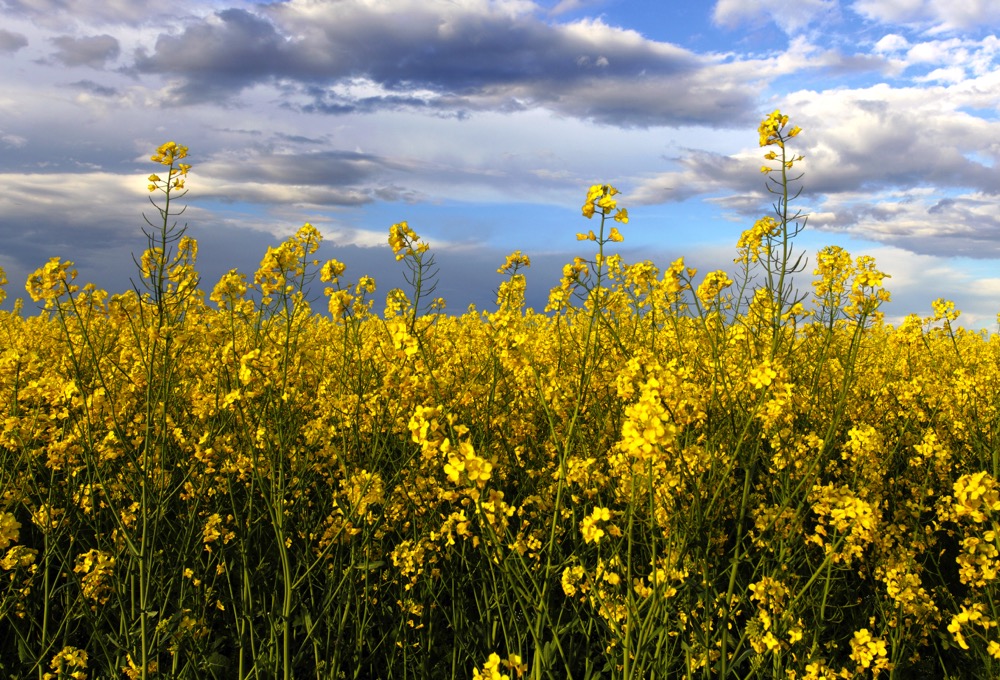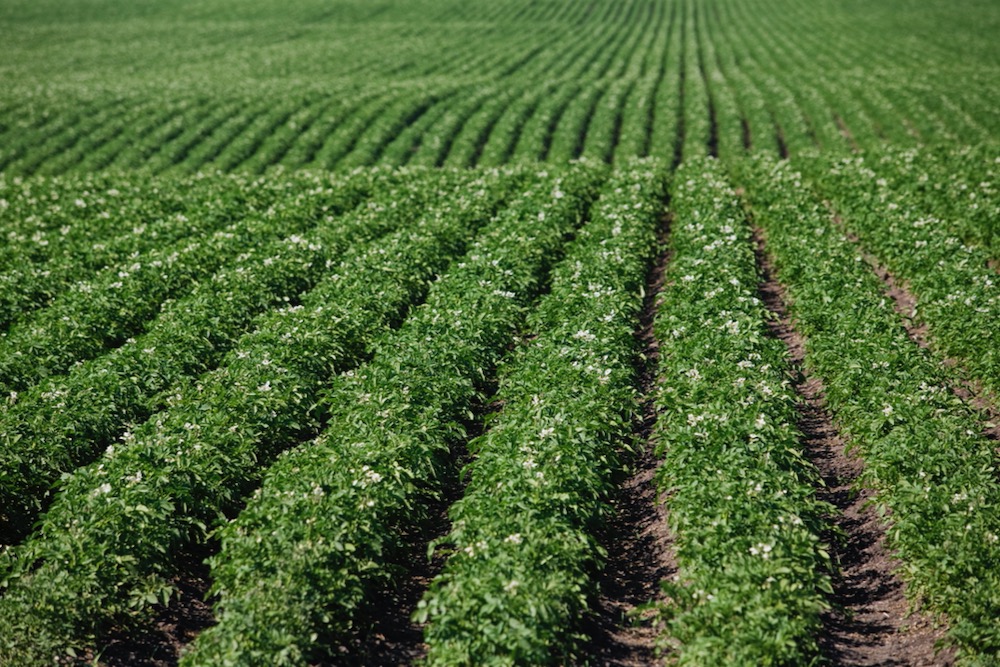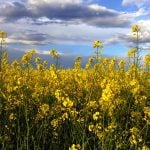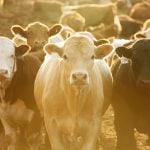Glacier FarmMedia | MarketsFarm – While the southern half of Alberta received good amounts of rainfall during the week ended July 15, the northern half was left hot and dry.
Nevertheless, crop conditions improved across the province according to its weekly crop report released on July 18.
The percentage of crops rated in good to excellent condition improved five points from two weeks earlier at 66 per cent. The central region had the best rating at 87.4 per cent, followed by the northwest at 80.4 per cent. The northeast region was rated at 67.8 per cent, while the south had 60.5 per cent and the dry Peace region trailed every other area at 27.6 per cent. The south region was unchanged from two weeks earlier, while every other region improved.
Read Also

ICE Weekly: No upside for canola if China situation continues: trader
Tony Tryhuk of RBC Dominion Securities said canola should stay rangebound if Canada’s trade war with China continues.
The five-year provincial average was 61.6 per cent while the 10-year average was 62.9 per cent. The Peace region is the only one below its five- and 10-year averages.
Potatoes were the best rated crop by far at 99.1 per cent. Mixed grains (84.8 per cent) and flax (72.4 per cent) were the only other crops rated 70 per cent good to excellent or higher. Crops in the worst condition were chickpeas (55.6 per cent), durum (59.1 per cent) and winter wheat (59.9 per cent). Spring wheat was rated at 67 per cent while canola was at 64.4 per cent.
Crops were developing ahead of schedule, with spring cereals nearing full flowering, compared to the historical average of late head emergence. Approximately 74 per cent of broadleaf crops were in the flowering stage and 20 per cent have begun podding. Spring cereals in the Peace region were in the early milk development stage, while crops in the south region were in early heading to mid-flowering. Crops in all regions were developing quicker than usual. Gophers were detected in a small fraction of fields in the south, central and northwest regions.
Despite rainfall in some areas, surface soil moisture declined provincewide by three points from last week at 53 per cent good to excellent. The five-year average was 57.4 per cent while the 10-year average was 57.5 per cent. The central region had the most moisture at 81.3 per cent while the Peace region was at 31.2 per cent. The northwest and northeast regions showed heavy declines at 19 points (to 44 per cent) and 18 points (to 38 per cent), respectively.
Sub-surface moisture levels were unchanged at 47 per cent, below the five-year (51 per cent) and 10-year (53 per cent) averages, respectively. The central region rated the highest at 70 per cent while the south and Peace regions were at 37 per cent.
Pasture conditions in Alberta improved four points from last week at 48 per cent good to excellent, but still below the five- and 10-year averages. The best rating was in the central region at 71 per cent while the worst was in the Peace region at 23 per cent.
Dryland tame hay was 66 per cent baled as of July 15, well ahead of historical averages, while yields totaled 1.2 tonnes per acre on average. Growth conditions were 40.3 per cent good to excellent in Alberta. The central region was at 64.6 per cent while the Peace region was at 19.4 per cent.















